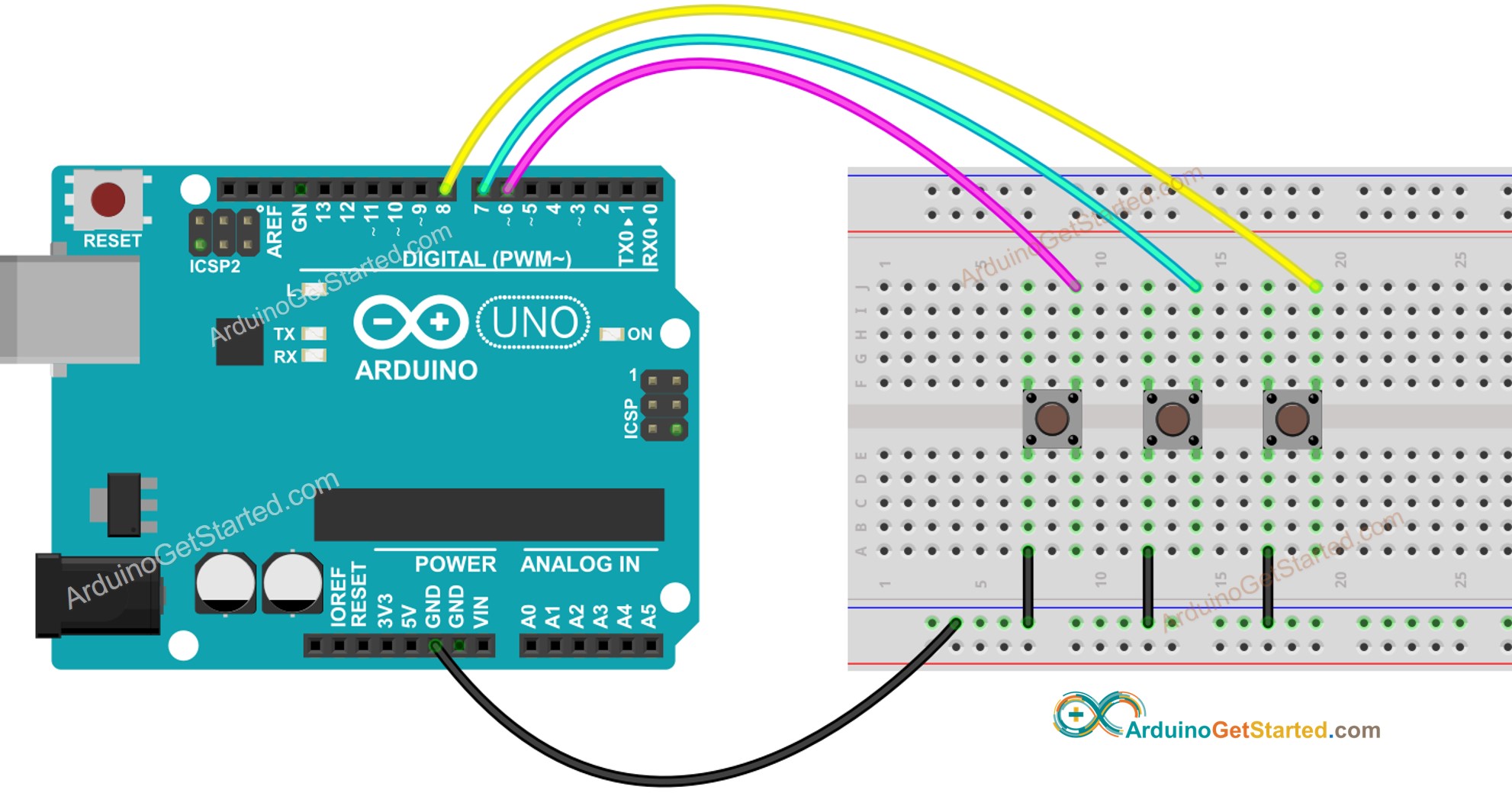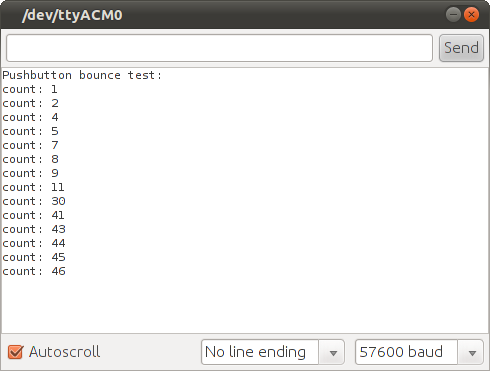
That way I could distinguish between the events quite easily.
#Bounce.h arduino Patch
So what I did was to switch the mix and patch selects to work on the trailing edge signal, that is when you release the switch and I made the volume switch occur on the leading edge, that is when both switches closed. It was open but is now closed and it was closed but is now open, often referred to as leading and trailing edge (of a square wave which is what you’d see on an oscilloscope if you tracked the voltage on the switch contacts). It also has the ‘changed state’ condition. What is interesting though is that a binary switch has more than just an on or off state. Waiting to see if the other switch was pressed was not really an option because how long do you wait?
#Bounce.h arduino code
I could not simply look at the switches and wait for them both to be pressed because the chances of my foot hitting them both at the exact same time is pretty much nil so the code would always detect one or the other on it’s own initially and I was using that state to switch the mix or patch. Well that turned out to be a lot more complex that you’d think. Since I was using the first two conditions already that left the ‘both buttons pressed’ condition to use to switch between normal and solo mode. Left button pressed, right button pressed or both pressed. not pressed) state that leaves three conditions. The two switches gives me four conditions, although because you cannot really use the normal (I.E. Guitar players usually have a pedal they just stomp on to boost the signal to a pre set level for solos so I figured it’d be useful to be able to do that using my stomp box. My MIDI keyboard controller (a keytar) does not send MIDI volume information, nor can I program it to do so, so I needed some way to be able to easily switch from normal playing mode (medium volume) to solo playing mode (boosted volume). Originally my intention was to have one switch control the wet/dry mix on my effects unit and the other to control the selected patch, flip flopping between them, all pretty simple stuff. The fallingEdge method it true for one scan after the de-bounced input goes from on-to-off.Having ‘completed’ my Arduino ‘stomp box’ project I immediately realized that I needed it to do more (of course!). The risingEdge method is true for one scan after the de-bounced input goes from off-to-on. Returns the number of milliseconds the pin has been in the current state Example: press and hold a button and have it repeat every X milliseconds even if the state does not actually change Forces the pin to signal a change (through update()) in X milliseconds Void interval( unsigned long interval_millis) Attach to a pin (and also sets initial state) RisingEdge and fallingEdge contributed by Tom HarkawayĪttach and bounce() constructor merged in by MPFlaga, for compatibility with bounce2.h Write function contributed by Jim Schimpf Rebounce and duration functions contributed by Eric Lowry

* Foundation, Inc., 51 Franklin Street, Fifth Floor, Boston,
#Bounce.h arduino software
* along with this program if not, write to the Free Software
#Bounce.h arduino license
* You should have received a copy of the GNU General Public License * GNU General Public License for more details. * MERCHANTABILITY or FITNESS FOR A PARTICULAR PURPOSE. * but WITHOUT ANY WARRANTY without even the implied warranty of * This program is distributed in the hope that it will be useful, * the Free Software Foundation either version 2 of the License, or * it under the terms of the GNU General Public License as published by * This program is free software you can redistribute it and/or modify

Learn more about bidirectional Unicode characters To review, open the file in an editor that reveals hidden Unicode characters. This file contains bidirectional Unicode text that may be interpreted or compiled differently than what appears below.


 0 kommentar(er)
0 kommentar(er)
